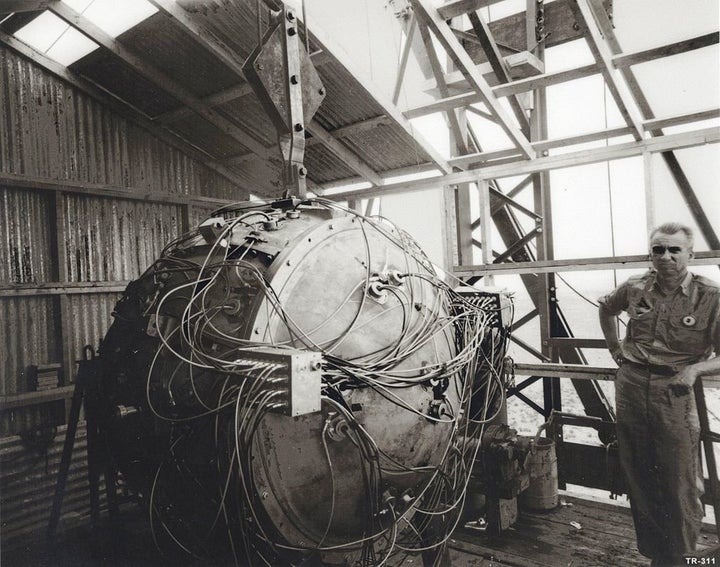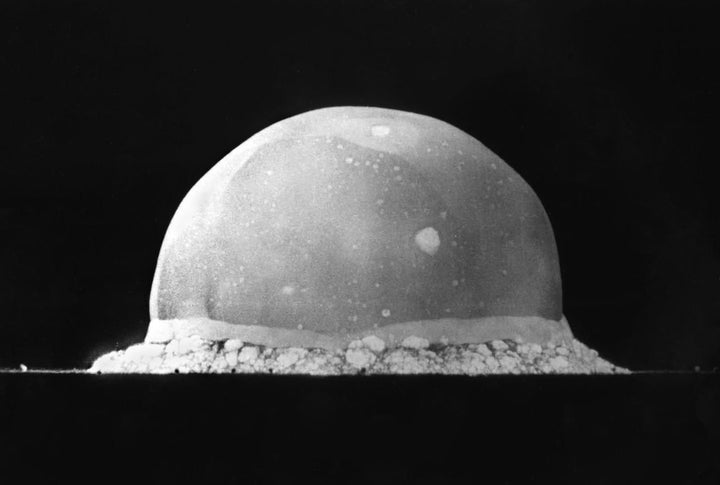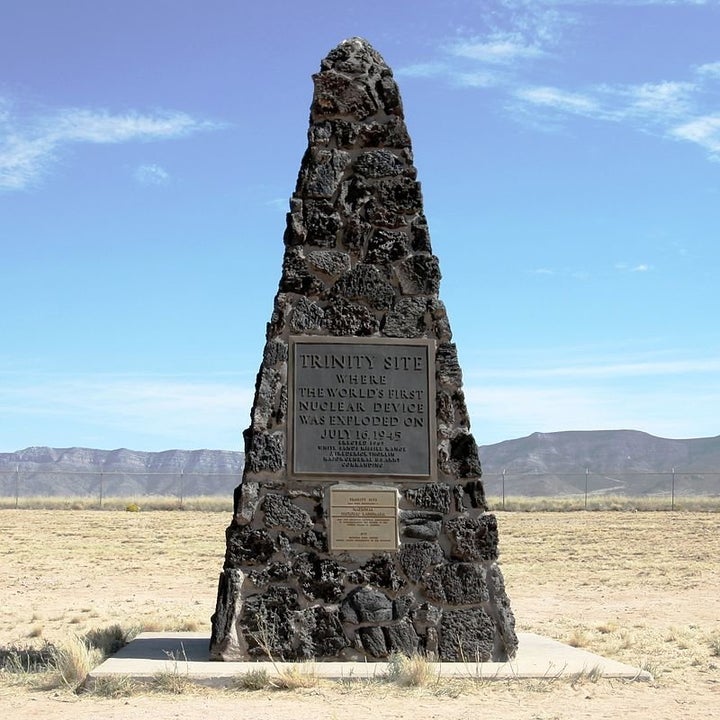
Earlier this week, world powers joined forces to curb Iran's controversial nuclear program. But 70 years ago, the rush to build "the bomb" ushered in the powerful -- and dangerous -- nuclear age.
The first detonation of an atomic bomb (code name: Trinity) took place at 5:29 a.m. on July 16, 1945, on the Alamogordo Bombing and Gunnery Range, located about 230 miles south of the Manhattan Project's headquarters in Los Alamos, New Mexico. When the implosion-design plutonium device (known as the "Gadget") exploded, it filled the sky with a terrifying radioactive cloud, scorched the earth below and released the explosive energy of about 19 kilotons of TNT.

The blast was witnessed by 425 people, including physicist Enrico Fermi, physicist and chemist Richard Tolman and J. Robert Oppenheimer, theoretical physicist and director of the Los Alamos Laboratory. Oppenheimer is believed to have assigned the test's code name after the poem "Holy Sonnet XIV: Batter My Heart, Three-Personed God" by John Donne, which notes in part:
Batter my heart, three-personed God; for you
As yet but knock, breathe, shine, and seek to mend;
That I may rise and stand, o’erthrow me, and bend
Your force to break, blow, burn, and make me new.
When asked to describe his reaction to the testing of the most destructive weapon mankind had ever created, Oppenheimer said, "We knew the world would not be the same. A few people laughed, a few people cried, most people were silent. I remembered the line from the Hindu scripture, the Bhagavad Gita. Vishnu is trying to persuade the Prince that he should do his duty and to impress him takes on his multi-armed form and says, 'Now, I am become Death, the destroyer of worlds.' I suppose we all thought that one way or another."

Roger Rasmussen, 94, who was an Army technician at the Trinity site, was six miles from Ground Zero during the explosion.
“I saw this light, tremendous light, which I presumed was the detonation. And I didn’t look up until I was told it was safe to look up. The radiation had passed us by that time. I looked up and I watched the fireball forming in the distance, a rather spectacular, multicolored, kind of a boiling ball," Rasmussen told the Washington Post.
Emilio Segré, who was present at the test and and later won the Nobel Prize in physics in 1959, was lying flat on the ground a full nine miles away from Ground Zero when the blast occurred. It left quite an impression.
"I believe that for a moment I thought the explosion might set fire to the atmosphere and thus finish the Earth, even though I knew that this was not possible," Segré said. "The margin of safety against such a catastrophe was sufficient to dispel any rational fear among knowledgeable scientists; however, one can always make errors.”
Residents in towns over 100 miles away, who were supposedly a safe distance from the blast, also saw the flash from the bomb's explosion. Its concussion caused windows to rattle in their panes and dishes to fall, The Associated Press reported. Thinking the end of the world was nigh, some fell to their knees and began to pray.
Following the success of the Trinity Test, scientists and engineers were able to construct the bombs that were dropped on the Japanese cities of Hiroshima and Nagasaki less than a month later. Those bombs initially killed more than 200,000 people; of those who survived the attacks, many suffered from the effects of radiation exposure.
According to the Washington Post, a plaque at the Bradbury Science Museum acknowledges these deaths, yet also praises the Los Alamos scientists:
“We must never forget the catastrophe that engulfed the world between 1939 and 1945. Los Alamos National Laboratory, which grew from the foundations of the Manhattan Project, salutes the men and women who came to this remote location to help the world win freedom from Nazi and Imperial Japanese tyranny. We owe them a tremendous debt.”
Seven decades later, the Trinity Test has served as inspiration for a TV show as well as numerous documentaries and books. It's also renewed tourists' interest in the area and the secretive World War II program that made the first atomic bombs.

Visitors from all over the world visit Trinity Site, the birthplace of nuclear weapons, and an area that was declared a national historic landmark in 1975. Ground Zero is marked by an obelisk made of black lava rock that is surrounded by a slightly depressed area to indicate where the blast cratered the ground.
“The atomic age started right here,” Robert Simpson, a veteran of the Air Force, told The New York Times. Visiting the site was an item on his "bucket list."
Protesters also visit the area -- to call for an end to nuclear proliferation and to warn about the peril caused by the Trinity Test. Residents of towns surrounding the Trinity site claim they were permanently affected by the test and one study done by the Centers for Disease Control and Prevention showed that exposure rates near the site were thousands of times higher than recommended.
Yet without warning about the possible hazards of radioactive exposure in the area, residents spent decades visiting the lands near the test site and taking home artifacts. Today, they're reportedly suffering from rare forms of cancer, and seeking compensation from the U.S. government.
Dropping the bombs on Japan helped to end the war, but that action also set the stage for the Cold War. And while the Cold War has been over since the collapse of the Soviet Union in 1991, the threat of nuclear annihilation continues as rogue nations and terrorists attempt to build or obtain these weapons of mass destruction. Even nuclear powers, like the U.S. and Russia, still have more than 16,000 nuclear weapons in their arsenal, and these bombs are five to 40 times more destructive than the ones used during World War II.
Although fear of the bomb seems like a relic of the past, the danger sparked by the Trinity Test 70 years ago remains ever present.
